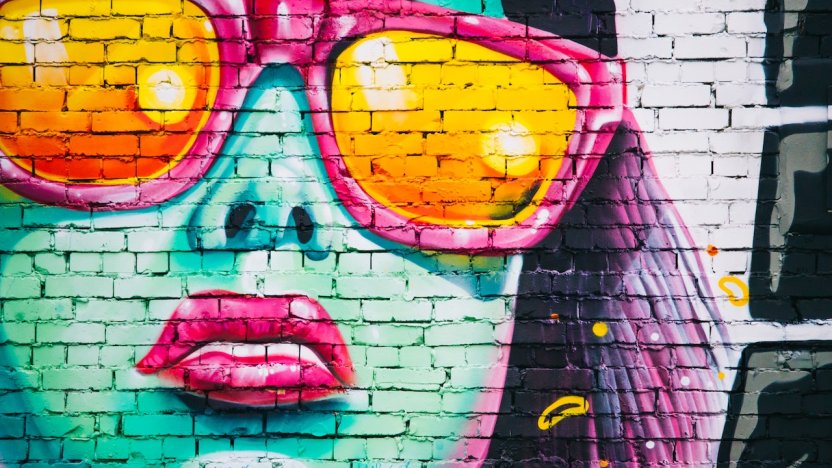When IP meets counterculture: Is graffiti protected by copyright?

Graffiti and, more broadly, street art was once considered more of a nuisance than an art form. While the circumstances of its creation may be legally ambiguous, street art has undoubted creative and monetary value. Little wonder that artists are now seeking to enforce IP protection for their creations.
Whether you consider graffiti to be art or vandalism (or both), chances are that if Banksy painted something on the side of your garage door, you’d be more pleased than annoyed.
As a subculture, street artists work a fine line between creator and vandal. Some like Banksy may (generally) be welcomed, but others – teenagers tagging their names in spray paint – will be less so. But, any art form that has as its canvas another person’s property is likely to cause confusion when it comes to identifying the existence and ownership of IP rights.
A legal tangle
In July, Julian Rivera became the latest street artist to complain  against the appropriation of artwork. He filed suit against US department store Walmart and TV personality Ellen DeGeneres for using his ‘Love logo’ (see right) on clothing without his permission. While he sells art and clothing featuring the logo on his own website, he does not wish for the design to be commercialised, as the complaint explains:
against the appropriation of artwork. He filed suit against US department store Walmart and TV personality Ellen DeGeneres for using his ‘Love logo’ (see right) on clothing without his permission. While he sells art and clothing featuring the logo on his own website, he does not wish for the design to be commercialised, as the complaint explains:
“Despite offers, [Rivera] has very rarely made his original art available as part of corporate advertising campaigns – partly for artistic reasons but also because doing so would diminish the value of his work [...] Indeed, nothing is more antithetical to a street artist’s credibility than association with mass-market consumerism – of which Walmart is the epitome. People who recognized his design in the EV1 Collection would have concluded that Rivera ‘sold out’, diminishing the value of his work and reputation.”
The DeGeneres EV1 clothing collection featuring a similar design (pictured left)  has been available since spring 2019. Rivera issued Walmart with a cease in desist in May, but the chain has argued in return that the logo was not copied and that it is only a “minimally creative”, ie common, design. It will now be up to the courts to decide whether infringement occurred.
has been available since spring 2019. Rivera issued Walmart with a cease in desist in May, but the chain has argued in return that the logo was not copied and that it is only a “minimally creative”, ie common, design. It will now be up to the courts to decide whether infringement occurred.
Does graffiti qualify for copyright protection?
Copyright is a property right which subsists in, among others, original artistic works. This includes graphic work, irrespective of artistic quality. There are only two requirements for an artwork to be eligible for copyright: It must be composed in a fixed medium and it must be original. For the latter, there needs to be sufficient skill and labour expended in creation of the work. While not all graffiti satisfies the requirement, there are many artists who create visually stunning, if not always appreciated, creations on walls, on pavements or any other available surface. These are no different from other artistic works and so satisfy the requirements for copyright protection – although there can be a question mark for some over permanence.
Once copyright is created in a work, permission is needed in order to reproduce the work in another medium. This means the graffiti cannot be reproduced in books, clothing, homeware and so on without the creator’s permission. Taking a photograph of all or a substantial part of a graffiti artwork is also a reproduction under copyright law.
Of course, many third parties seeking to use the works may think it is worth the risk. In order to enforce their rights, the artist could need to come out of the woodwork, exposing their identity and potentially putting them at risk of prosecution for creating the work in the first place. This does not apply in Rivera’s case, however, given that the logo is so clearly used on his website.
The value in counterculture
Seeking copyright protection may sound like the latest evolution of street art away from its countercultural, outsider origins, but street artists have long wanted greater control over their work. There is no doubt that street art can be easily targeted and reproduced for commercial profit. Last year, for example, there were cases brought against fast food chain McDonald’s and high street clothing brand H&M for use of graffiti without permission.
As graffiti and street art continues to gain international popularity, economic forces may cause even more of this traditionally taboo artwork to be moved from the street to galleries, and used in commerce. This is likely to result in further copyright disputes.
Photo credit: Unsplash